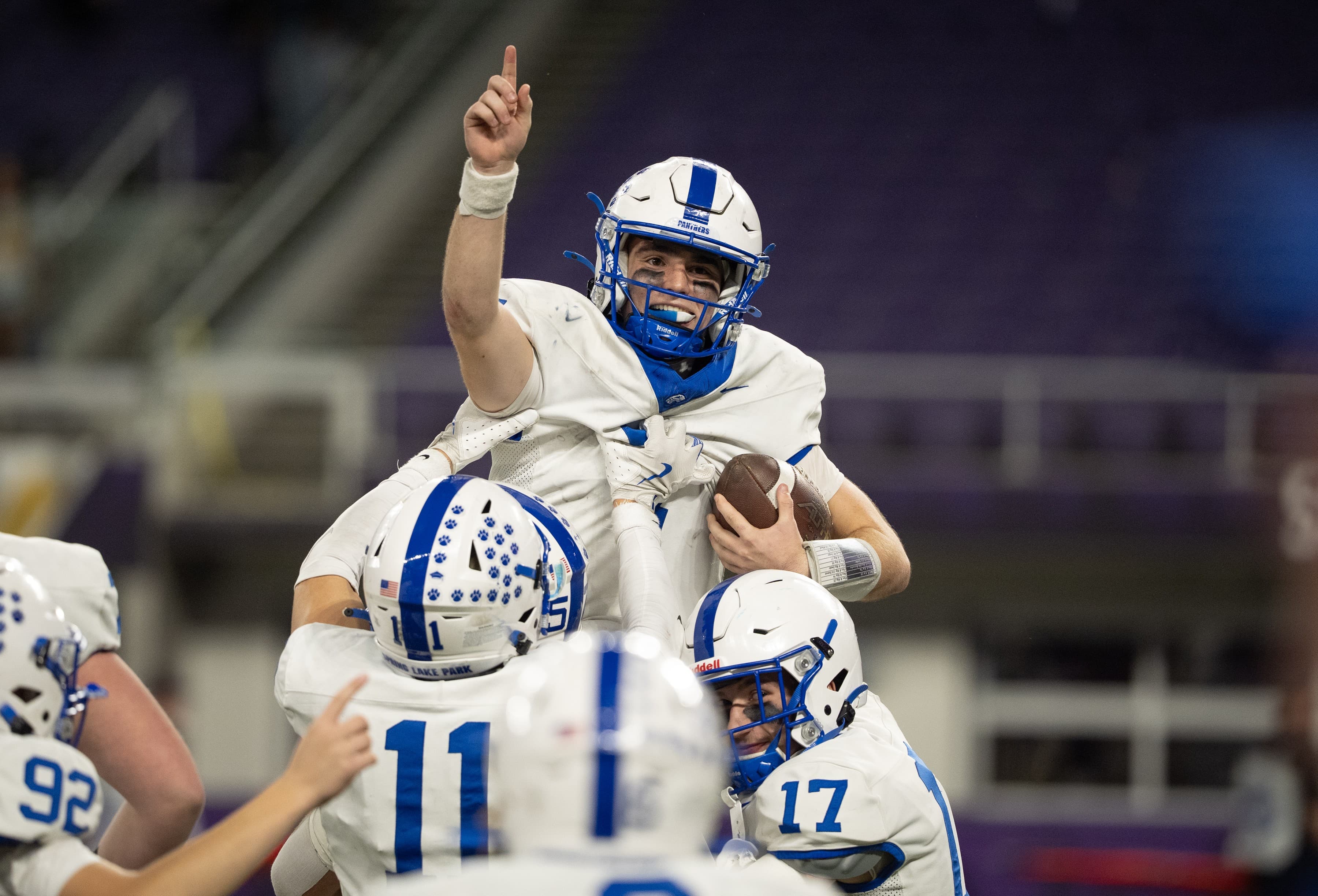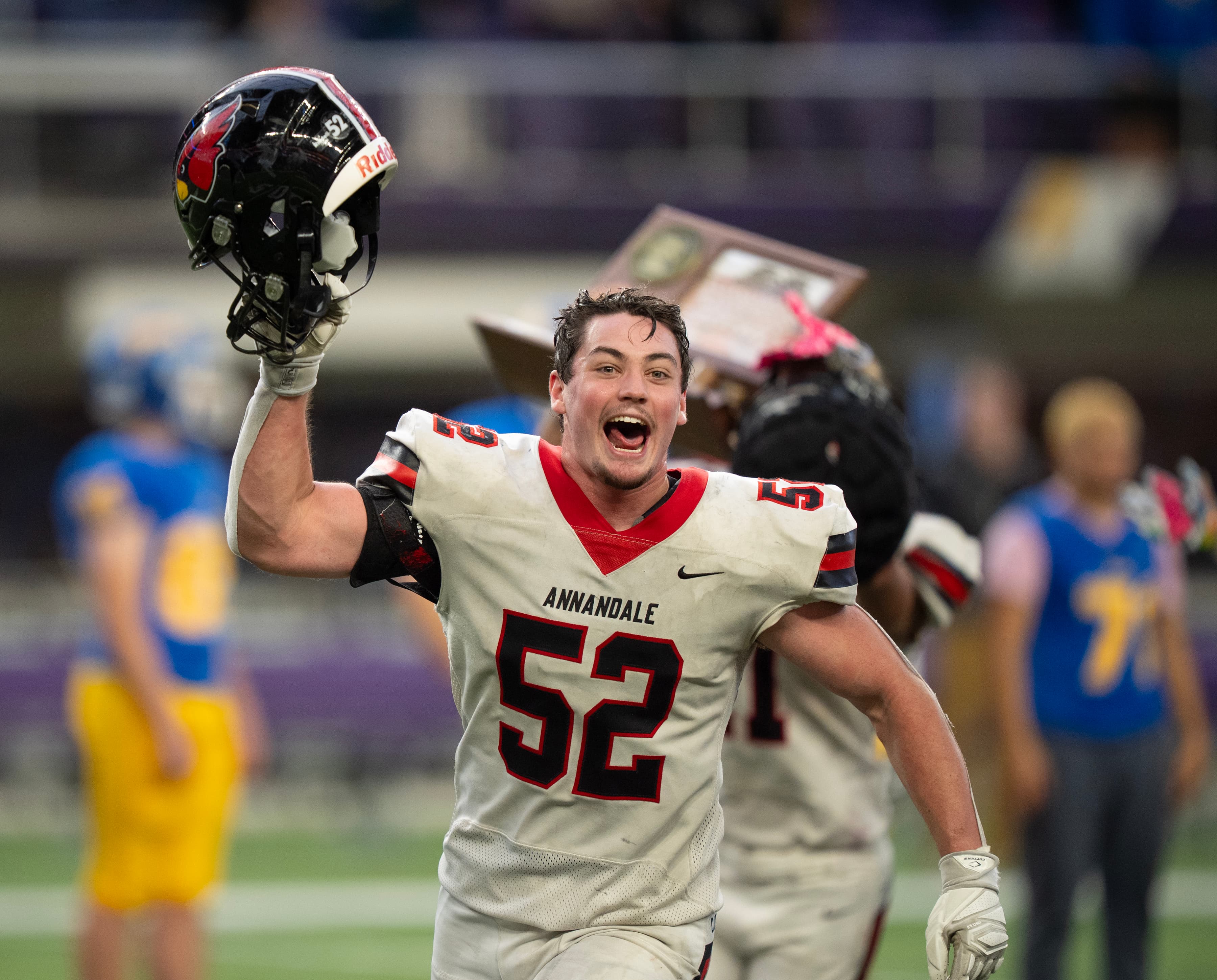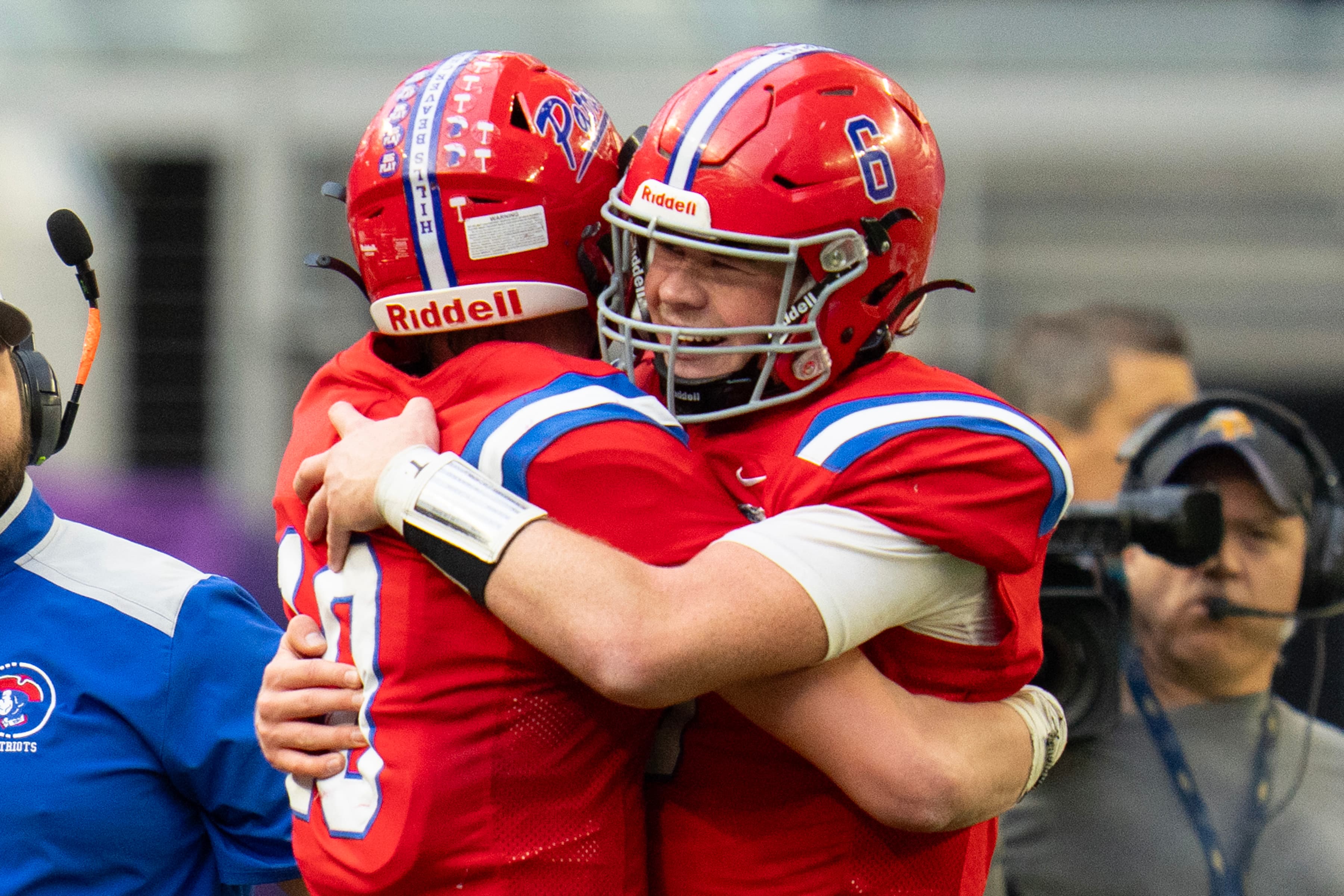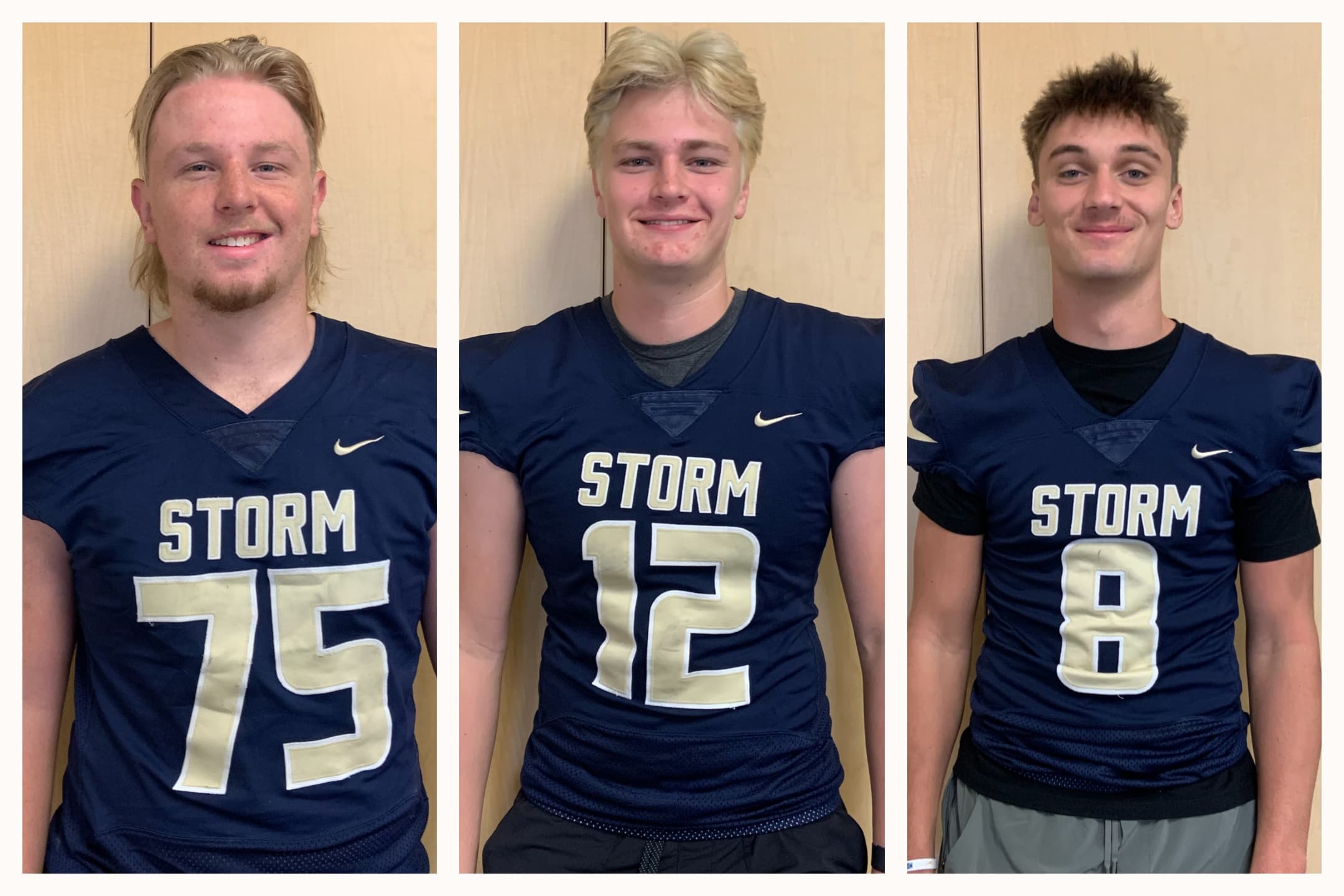Middle school athletes fielding college scholarship interest no longer unusual
Strib VarsityHill-Murray eighth-grade basketball star Ashlee Wilson and Eden Prairie freshman football standout Jayden Bates are among Minnesota’s athletes experiencing early recruiting.

The Minnesota Star Tribune
When most seventh-graders were stressed about algebra and geometry, Hill-Murray girls basketball standout Ashlee Wilson was beaming over her first official Division I scholarship offer. It came in April from Iowa, the same program that produced college and WNBA icon Caitlin Clark.
Days later, Gophers women’s basketball coach Dawn Plitzuweit offered Wilson a scholarship. Ohio State, Oklahoma, Iowa State and others quickly did the same.
“It’s cool knowing who is really interested, especially recruiting me so young,” said Wilson, now an eighth-grader who’s widely regarded as one of the nation’s top recruits in the 2030 graduating class.
Wilson isn’t the only prodigy in Minnesota being pursued by top college sports programs.
This summer, Gophers football coach P.J. Fleck offered a scholarship to Eden Prairie incoming freshman and 14-year-old Jayden Bates, making him the state’s first football player to receive an offer from the Gophers out of middle school since Cretin-Derham Hall’s Seantrel Henderson in 2007.
“It was amazing,” said Bates, a 6-5, 215-pound defensive end who had yet to play in a varsity game when he was offered the scholarship. “It’s something I did not expect.”
There used to be more extreme cases like 9, 10 and 11-year-olds offered scholarships nearly a decade ago. That and several examples in the race to secure the next big sport star led the NCAA Division I Council in 2019 to adopt rules designed to curb early recruiting. Now, coaches are restricted from communicating directly first with recruits until their sophomore and junior years in most sports.
Still, early recruiting occurs because in some sports, prospects of any age are allowed to contact coaches.
For some prospects, having time — a few years actually — to choose a college program takes pressure off during the decisionmaking process. For others, it’s a looming decision that intensifies with every phone call from a college coach.
“For me, it’s gotten a little bit more stressful because it’s picked up a lot since [the first day of] June because coaches have been able to contact me,” said Mya Wilson, Ashlee’s older sister and the state’s No. 1 girls basketball recruit in the Class of 2027. “It’s still fun. But I think being recruited at seventh grade is crazy. You don’t even know what half the stuff even means, I feel like, at that age.”
Former Minnehaha Academy basketball star Jalen Suggs was offered a scholarship in sixth grade in 2013, but he didn’t commit to Gonzaga until his senior year. Former Hopkins basketball standout Paige Bueckers got her first offer in eighth grade in 2016, but she committed to Connecticut as a high school junior.
Related Coverage
Providence Academy senior and Kentucky basketball recruit Maddyn Greenway received her first offer when she was in eighth grade. The scenario’s the same for the state’s top girls players in other classes, which include Greenway’s freshman sister, Beckett, and Duluth Marshall’s Chloe Johnson, the No. 3 girls basketball player nationally in the 2028 class.
The Gophers men’s hockey program made headlines in 2017 when it received commitments from in-state prospects Cruz and Chaz Lucius, who at ages 13 and 14 were believed to be the youngest players ever to commit to the U.
Chaz played his freshman year with the Gophers before signing with the Winnipeg Jets in 2022. Cruz switched his commitment to rival Wisconsin and eventually transferred to Arizona State.
“I don’t think it’s ever too young,” Ashlee Wilson said. “I guess they can see potential when they see it. You kind of just have to believe in that potential.”
Different rules for different athletes
NCAA rules don’t prohibit young athletes like Ashlee Wilson and Bates from starting the recruiting process as early as they want on their end.
“I really like building relationships with the coaches,” Ashlee Wilson said. “Learning all about the campuses and the people. What they do at practice and summer workouts. I really love it.”
Recruiting conversations are less restrictive for football and basketball prospects on unofficial visits if they are making first contact. Verbal offers can be extended by the coach, and the prospect is even allowed to verbally commit.
Verbal offers and commitments aren’t binding, though, on either side until athletes sign official documentation their senior year.
College basketball and football coaches can’t reach out to prospects until June 15 after an athlete’s sophomore year or Sept. 1 during the athlete’s junior year in most other sports.
The NCAA decided men’s hockey coaches can’t communicate with recruits until Jan. 1 of their sophomore year. Prospects can’t receive a verbal offer until Aug. 1 of their junior year.
“It can get a little overwhelming,” said undecided Shattuck-St. Mary’s forward and Andover native Nolan Fitzhenry, a member of the U.S. under-17 national team. “If colleges reached out when I was younger, I wouldn’t be the same person I am today.”
Edina junior Freddie Schneider is trying to take the process slowly. He was playing pond hockey with friends when his phone buzzed with college coaches contacting him for the first time in January.
Hands freezing, he tried calling them back right away.
“It felt like yesterday I was a little kid playing hockey, but now they’re calling you,” said Schneider, who went from leading the Hornets to the state semifinals in March to playing for the U.S. junior national team this summer. So far he has visited the Gophers, Michigan and St. Thomas, his top three schools.
Schneider was glad his offers didn’t come until he was older.
“I think the newer rule is awesome, so kids can take their time and fully mature as a person before they can commit to a college,” he said.
College volleyball coaches can’t offer a scholarship until June 15 after a prospect’s sophomore year and must wait to host unofficial and official visits until Aug. 1 before junior year.
Eagan sophomore and 6-3 outside hitter Mesa Jameson was named to Team USA’s under-17 girls volleyball national team last week, but the recruiting frenzy for her has to wait.
A five-star talent and club volleyball All-American like Jameson could have had dozens of offers and invitations to visit powerhouse programs. She is fine putting that off.
“It’s really helpful because I can look at my options and watch the season of college volleyball,” Jameson said.
Betting on potential
Fleck’s Gophers are expected to sign three of Minnesota’s top seniors in Jackson County Central’s Roman Voss, Rocori’s Andrew Trout and Forest Lake’s Howie Johnson in December. The Gophers also have a commitment from Wayzata’s Eli Diane, the state’s No. 1-rated junior. Trout and Diane committed as sophomores to the U.
Coaches like Fleck identify that type of talent at their elite camps, where this past summer Bates bulldozed his way through a 6-6, 295-pound high school junior offensive linemen in a pass-rushing drill — in front of Fleck.
“Coaches were looking, so I knew I needed to step it up and really show out,” Bates said.
The camps are a way to put prospects in front of coaches before contact is allowed.
“It’s even critical getting in on them earlier by getting them at your camp in their freshman and sophomore years,” Fleck said, speaking generally. “There are a lot of rules in terms of the contact piece, but if you get them on campus and you get them in a camp, you can get an early evaluation.”
Fleck said early recruiting is risky because some top prospects aren’t “always going to pan out.”
“I think you have to have a really good balance of what you’re going to take [as a commitment] early and then obviously having some [scholarship] spots at the end, too,” he said.
Bates’ father described his son as humble and said the Gophers’ offer in June was a confidence-building moment for their family.
“[Fleck] saw something in my son as an eighth-grader and going into ninth grade to offer that kid — and that speaks volumes,” Titus Bates said. “I told Jayden, ‘Your journey is not complete yet, but it’s feeling really good right now.’ ”
Benefits of exposure
Young prospects and their parents look to recruiting camps for instant exposure to college coaches.
DeLaSalle 6-8 sophomore basketball player Ichima Idoko proved he was the No. 1 player in Minnesota’s 2028 class at the Prep Hoops Sophomore ID camp in August. He’s since gained offers from such schools as Arizona State, Kansas State and UNLV.
“Coaches are watching you,” Idoko said. “It just makes me feel like I don’t want to get lazy. When I got my first offer, I got excited and it made me want to push harder.”
At Hill-Murray, college coaches show up just to watch the Wilson sisters’ workouts. The same coaches also have seen the sisters with the All-Iowa Attack AAU program.
Ashlee, who has grown to 6 feet since last season, doesn’t feel pressure from the early recruiting process. Her basketball skills are still developing. So is her preference of which school to choose for college.
“I feel like that’s a big part,” she said. “Not saying anything against the people who are going to recruit me later. I like it now. But I’m probably not going to commit that early. You improve so much from right now until like when you’re a junior.”
About the Author
Marcus Fuller
Reporter
Marcus Fuller is Strib Varsity's Insider reporter, providing high school beat coverage, features, analysis and recruiting updates. He's a former longtime Gophers and college sports writer for the Minnesota Star Tribune.
See More




Comments